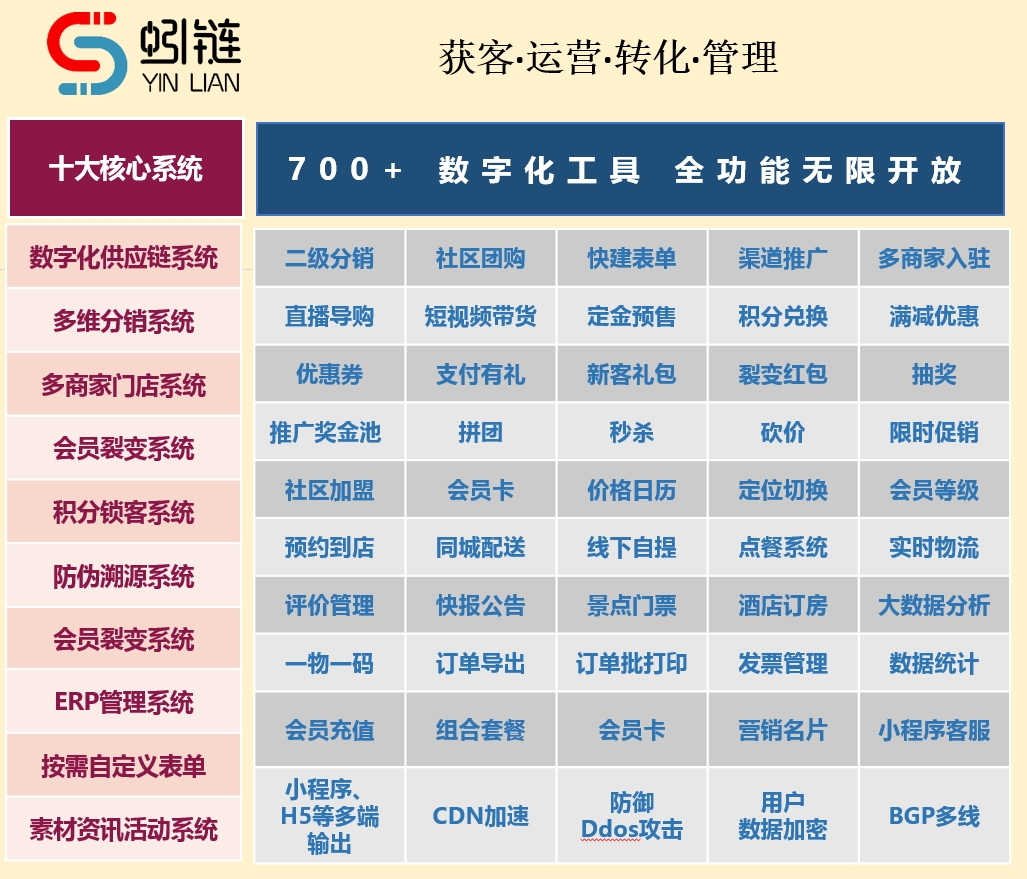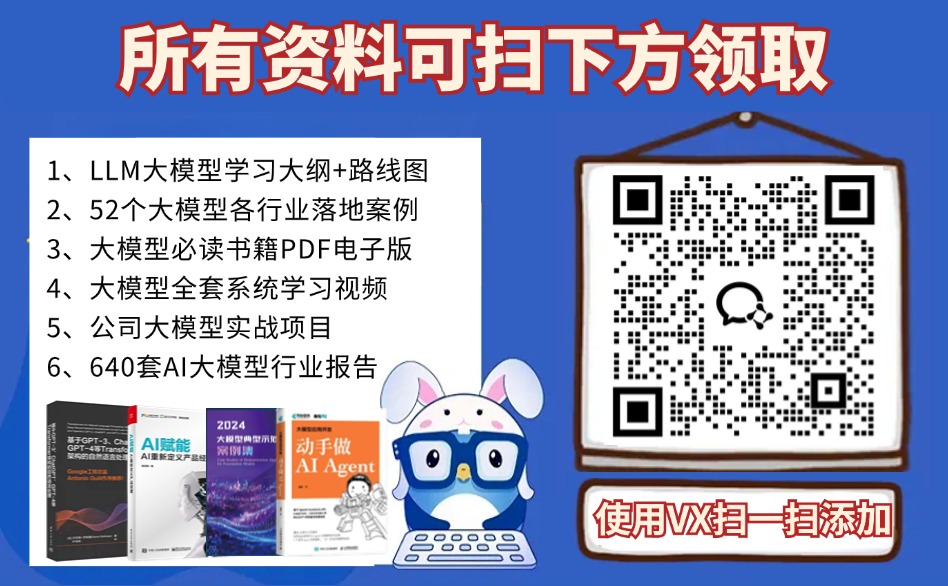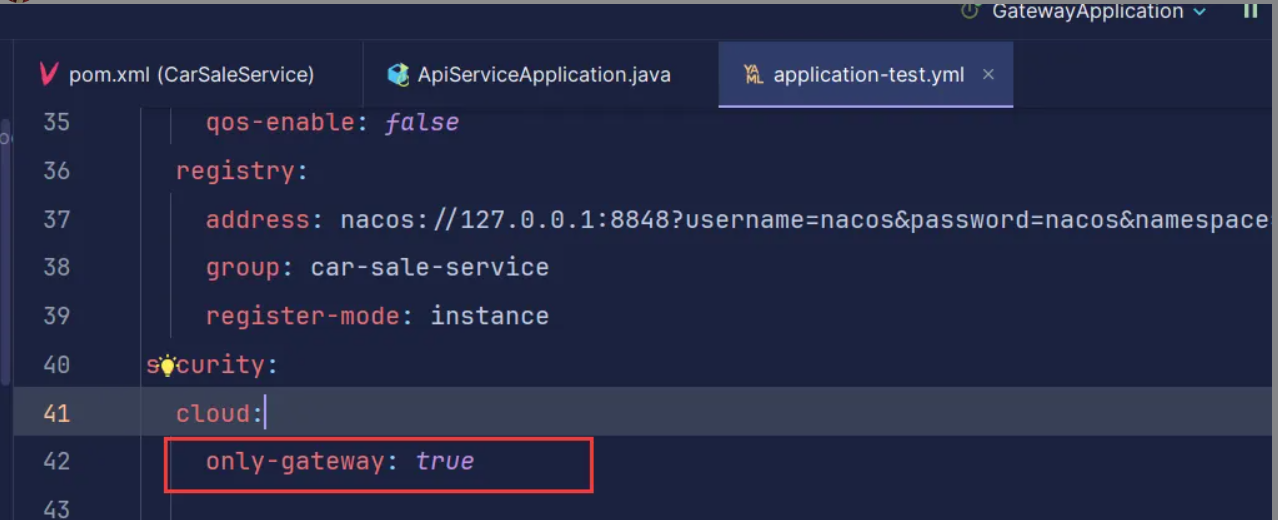一、死锁
线程死锁
死锁是指两个或者两个以上的线程在执行的过程中,因争夺资源产生的一种互相等待现象。
假设线程 A 持有资源 1,线程 B 持有资源 2,它们同时都想申请对方的资源,那么这两个线程就会互相等待而进入死锁状态。

使用 Java 代码模拟上述死锁场景:
public class Resources {
public static final Object resource1 = new Object(); // 资源 1
public static final Object resource2 = new Object(); // 资源 2
}
public class ThreadA extends Thread{
@Override
public void run() {
synchronized (Resources.resource1) {
System.out.println(Thread.currentThread().getName() + " get Resource-1");
try {
Thread.sleep(1000);
} catch (InterruptedException e) {
e.printStackTrace();
}
System.out.println(Thread.currentThread().getName() + " waiting get Resource-2");
synchronized (Resources.resource2) {
System.out.println(Thread.currentThread().getName() + " get Resource-2");
}
}
}
}
public class ThreadB extends Thread{
@Override
public void run() {
synchronized (Resources.resource2) {
System.out.println(Thread.currentThread().getName() + " get Resource-2");
try {
Thread.sleep(1000);
} catch (InterruptedException e) {
e.printStackTrace();
}
System.out.println(Thread.currentThread().getName() + " waiting get Resource-1");
synchronized (Resources.resource1) {
System.out.println(Thread.currentThread().getName() + " get Resource-1");
}
}
}
}
public class DeadLockDemo {
public static void main(String[] args) {
Thread threadA=new ThreadA();
threadA.setName("Thread A");
threadA.start();
Thread threadB=new ThreadB();
threadB.setName("Thread B");
threadB.start();
}
}
输出结果:
Thread A get Resource-1
Thread B get Resource-2
Thread B waiting get Resource-1
Thread A waiting get Resource-2
线程 A 通过 synchronized (resource1) 获得 resource1 的监视器锁,然后线程 A 休眠 1s,执行线程 B 获取到 resource2 的监视器锁。线程 A 和线程 B 休眠结束了都开始企图请求获取对方的资源,然后这两个线程就会陷入互相等待的状态,这也就产生了死锁。
上面的例子符合产生死锁的四个必要条件:
-
互斥:每个资源要么已经分配给了一个进程,要么就是可用的。 -
占有和等待:已经得到了某个资源的进程可以再请求新的资源。 -
不可抢占:已经分配给一个进程的资源不能强制性地被抢占,它只能被占有它的进程显式地释放。 -
环路等待:有两个或者两个以上的进程组成一条环路,该环路中的每个进程都在等待下一个进程所占有的资源。
死锁预防
在程序运行之前预防发生死锁。
-
破坏占有和等待条件:一种实现方式是规定所有进程在开始执行前请求所需要的全部资源。 -
破坏不可抢占条件:占用部分资源的线程进一步申请其他资源时,如果申请不到,可以主动释放它占有的资源。 -
破坏环路等待条件:给资源统一编号,进程只能按编号顺序来请求资源。
我们对线程 B 的代码进行如下改造,就不会出现死锁了。
public class ThreadB extends Thread{
@Override
public void run() {
synchronized (Resources.resource1) {
System.out.println(Thread.currentThread().getName() + " get Resource-1");
try {
Thread.sleep(1000);
} catch (InterruptedException e) {
e.printStackTrace();
}
System.out.println(Thread.currentThread().getName() + " waiting get Resource-2");
synchronized (Resources.resource1) {
System.out.println(Thread.currentThread().getName() + " get Resource-2");
}
}
}
}
输出结果:
Thread A get Resource-1
Thread A waiting get Resource-2
Thread A get Resource-2
Thread B get Resource-1
Thread B waiting get Resource-2
Thread B get Resource-2
线程 A 首先获得到 resource1 的监视器锁,这时候线程 2 就获取不到了。然后线程 1 再去获取 resource2 的监视器锁,可以获取到。线程 1 释放了对 resource1、resource2 的监视器锁的占用,线程 2 获取到就可以执行了。这样就破坏了环路等待条件,因此避免了死锁。
二、线程不安全示例
如果多个线程对同一个共享数据进行访问而不采取同步操作的话,那么操作的结果是不一致的。
以下代码演示了 1000 个线程同时对 cnt 执行自增操作,操作结束之后它的值有可能小于 1000。
public class ThreadUnsafeExample {
private int cnt = 0;
public void add() {
cnt++;
}
public int get() {
return cnt;
}
}
public static void main(String[] args) throws InterruptedException {
final int threadSize = 1000;
ThreadUnsafeExample example = new ThreadUnsafeExample();
final CountDownLatch countDownLatch = new CountDownLatch(threadSize);
ExecutorService executorService = Executors.newCachedThreadPool();
for (int i = 0; i < threadSize; i++) {
executorService.execute(() -> {
example.add();
countDownLatch.countDown();
});
}
countDownLatch.await();
executorService.shutdown();
System.out.println(example.get());
}
输出结果:
998 //如果线程是安全的最终结果就是 1000
解决线程安全问题:
-
方案一:使用 AtomicInteger(实际上非阻塞同步)
public class ThreadSafeExample {
// cnt 的初始值为 0。
private AtomicInteger cnt = new AtomicInteger(0);
public void add() {
cnt.incrementAndGet();
}
public int get() {
return cnt.get();
}
public static void main(String[] args) throws InterruptedException {
final int threadSize = 1000;
ThreadSafeExample example = new ThreadSafeExample();
final CountDownLatch countDownLatch = new CountDownLatch(threadSize);
ExecutorService executorService = Executors.newCachedThreadPool();
for (int i = 0; i < threadSize; i++) {
executorService.execute(() -> {
example.add();
countDownLatch.countDown();
});
}
countDownLatch.await();
executorService.shutdown();
System.out.println(example.get());
}
}输出结果:
1000 -
方案二:使用 synchronized(实际上是阻塞同步/互斥同步)
public class ThreadSafeExample2 {
// cnt 的初始值为 0。
private int cnt = 0;
public synchronized void add() {
cnt++;
}
public synchronized int get() {
return cnt;
}
public static void main(String[] args) throws InterruptedException {
final int threadSize = 1000;
ThreadSafeExample2 example = new ThreadSafeExample2();
final CountDownLatch countDownLatch = new CountDownLatch(threadSize);
ExecutorService executorService = Executors.newCachedThreadPool();
for (int i = 0; i < threadSize; i++) {
executorService.execute(() -> {
example.add();
countDownLatch.countDown();
});
}
countDownLatch.await();
executorService.shutdown();
System.out.println(example.get());
}
}输出结果:
1000 -
方案三:使用 Reentrant(实际上是阻塞同步/互斥同步)
public class ThreadSafeExample3 {
// cnt 的初始值为 0。
private int cnt = 0;
private ReentrantLock lock = new ReentrantLock();
public void add() {
try{
lock.lock();
cnt++;
}finally {
lock.unlock();
}
}
public int get() {
try{
lock.lock();
return cnt;
}finally {
lock.unlock();
}
}
public static void main(String[] args) throws InterruptedException {
final int threadSize = 1000;
ThreadSafeExample3 example = new ThreadSafeExample3();
final CountDownLatch countDownLatch = new CountDownLatch(threadSize);
ExecutorService executorService = Executors.newCachedThreadPool();
for (int i = 0; i < threadSize; i++) {
executorService.execute(() -> {
example.add();
countDownLatch.countDown();
});
}
countDownLatch.await();
executorService.shutdown();
System.out.println(example.get());
}
}输出结果:
1000
三、实现线程安全方式
所谓线程安全就是说,多个线程不管以何种方式访问某个类,并且在主调代码中不需要进行同步,都能表现正确的行为。
线程安全有以下几种实现方式:不可变、互斥同步、非阻塞同步、无同步方案(栈封闭和线程本地存储)
不可变
不可变(Immutable)的对象一定是线程安全的,不需要再采取任何的线程安全保障措施。只要一个不可变的对象被正确地构建出来,永远也不会看到它在多个线程之中处于不一致的状态。多线程环境下,应当尽量使对象成为不可变,来满足线程安全。
不可变的类型:
-
final 关键字修饰的基本数据类型 -
String -
枚举类型 -
Number 部分子类,如 Long 和 Double 等数值包装类型,BigInteger 和 BigDecimal 等大数据类型。但同为 Number 的原子类 AtomicInteger 和 AtomicLong 则是可变的。
对于集合类型,可以使用 Collections.unmodifiableXXX() 方法来获取一个不可变的集合。
public class ImmutableExample {
public static void main(String[] args) {
Map<String, Integer> map = new HashMap<>();
Map<String, Integer> unmodifiableMap = Collections.unmodifiableMap(map);
unmodifiableMap.put("a", 1);
}
}
Exception in thread "main" java.lang.UnsupportedOperationException
at java.util.Collections$UnmodifiableMap.put(Collections.java:1457)
at ImmutableExample.main(ImmutableExample.java:9)
Collections.unmodifiableXXX() 先对原始的集合进行拷贝,需要对集合进行修改的方法都直接抛出异常。
public V put(K key, V value) {
throw new UnsupportedOperationException();
}
互斥同步
互斥同步最主要的问题就是线程阻塞和唤醒所带来的性能问题,因此这种同步也称为阻塞同步。
互斥同步属于一种悲观的并发策略:总是认为只要不去做正确的同步措施,那就肯定会出现问题。无论共享数据是否真的会出现竞争,它都要进行加锁。
Java 中 synchronized 和 ReentrantLock 等独占锁就是悲观锁思想的实现。
非阻塞同步
乐观锁基于冲突检测的乐观并发策略:先进行操作,如果没有其他线程争用共享数据,操作成功;如果数据存在竞争,就采用补偿措施(常见的有不断重试,直到成功)。这种乐观的并发策略的许多实现是不需要将线程挂起的,因此这种同步操作称为非阻塞同步。
1. CAS
乐观锁需要操作和冲突检测这两个步骤具备原子性,这里就不能再使用互斥同步来保证了,只能靠硬件来完成。、
硬件支持的原子性操作最典型的是:CAS(Compare-and-Swap)。
当多个线程尝试使用 CAS 同时更新一个共享变量时,只有其中一个线程能够更新共享变量中的值,其他线程都失败,失败的线程不会被挂起,而是被告知在这次竞争中失败,并且可以再次尝试。
CAS 指令需要有 3 个操作数,分别是内存地址 V、旧的预期值 A 和新值 B。当执行操作时,只有当 V 的值等于 A,才将 V 的值更新为 B。
2. 原子操作类
J.U.C 包里面的原子操作类的方法调用了 Unsafe 类的 CAS 操作。
无同步方案
要保证线程安全,并不是一定就要进行同步。如果一个方法本来就不涉及共享数据,那它自然就无须任何同步措施去保证正确性。
1. 栈封闭
多个线程访问同一个方法的局部变量时,不会出现线程安全问题,因为局部变量存储在虚拟机栈中,属于线程私有的。
public class StackClosedExample {
public void add100() {
int cnt = 0;
for (int i = 0; i < 100; i++) {
cnt++;
}
System.out.println(cnt);
}
}
public static void main(String[] args) {
StackClosedExample example = new StackClosedExample();
ExecutorService executorService = Executors.newCachedThreadPool();
executorService.execute(() -> example.add100());
executorService.execute(() -> example.add100());
executorService.shutdown();
}
100
100
2. 线程本地存储(Thread Local Storage)
如果一段代码中所需要的数据必须与其他代码共享,那就看看这些共享数据的代码是否能保证在同一个线程中执行。如果能保证,我们就可以把共享数据的可见范围限制在同一个线程之内,这样,无须同步也能保证线程之间不出现数据争用的问题。
符合这种特点的应用并不少见,大部分使用消费队列的架构模式(如“生产者-消费者”模式)都会将产品的消费过程尽量在一个线程中消费完。其中最重要的一个应用实例就是经典 Web 交互模型中的“一个请求对应一个服务器线程”(Thread-per-Request)的处理方式,这种处理方式的广泛应用使得很多 Web 服务端应用都可以使用线程本地存储来解决线程安全问题。
可以使用 java.lang.ThreadLocal 类来实现线程本地存储功能。如果创建一个 ThreadLocal 变量,那么访问这个变量的每个线程都会有这个变量的一个副本,在实际多线程操作的时候,操作的是自己本地内存中的变量,从而规避了线程安全问题。
ThreadLocal 示例
public class ThreadLocalExample {
public static void main(String[] args) {
ThreadLocal threadLocal = new ThreadLocal();
Thread thread1 = new Thread(() -> {
threadLocal.set(1);
try {
Thread.sleep(1000);
} catch (InterruptedException e) {
e.printStackTrace();
}
System.out.println(threadLocal.get());
threadLocal.remove();
});
Thread thread2 = new Thread(() -> {
threadLocal.set(2);
threadLocal.remove();
});
thread1.start();
thread2.start();
}
}
1
thread1 中设置 threadLocal 为 1,而 thread2 设置 threadLocal 为 2。过了一段时间之后,thread1 读取 threadLocal 依然是 1,不受 thread2 的影响。
ThreadLocal 原理
每个 Thread 都有一个 ThreadLocal.ThreadLocalMap 对象。
public class Thread implements Runnable {
// 与此线程有关的 ThreadLocal 值,由 ThreadLocal 类维护
ThreadLocal.ThreadLocalMap threadLocals = null;
}
默认情况下 threadLocals 变量值为 null,只有当前线程调用 ThreadLocal 类的 set() 或 get() 方法时才创建,实际上调用这两个方法的时候,我们调用的是ThreadLocalMap 类对应的 get()、set()方法。
当调用一个 ThreadLocal 的 set(T value) 方法时,先得到当前线程的 ThreadLocalMap 对象,然后将 <ThreadLocal 对象,value> 键值对插入到该 Map 中。变量是存放在当前线程的 ThreadLocalMap 中,并不是存在 ThreadLocal 中。
public void set(T value) {
Thread t = Thread.currentThread();
ThreadLocalMap map = getMap(t); // 获取当前线程的 ThreadLocalMap 对象
if (map != null)
map.set(this, value);
else
createMap(t, value);
}
ThreadLocalMap getMap(Thread t) {
return t.threadLocals;
}
get() 方法类似。
public T get() {
Thread t = Thread.currentThread();
ThreadLocalMap map = getMap(t); // 获取当前线程的 ThreadLocalMap 对象
if (map != null) {
ThreadLocalMap.Entry e = map.getEntry(this);
if (e != null) {
@SuppressWarnings("unchecked")
T result = (T)e.value;
return result;
}
}
return setInitialValue();
}
所以对于以下代码:
public class ThreadLocalExample1 {
public static void main(String[] args) {
ThreadLocal threadLocal1 = new ThreadLocal();
ThreadLocal threadLocal2 = new ThreadLocal();
Thread thread1 = new Thread(() -> {
threadLocal1.set(1);
threadLocal2.set(1);
});
Thread thread2 = new Thread(() -> {
threadLocal1.set(2);
threadLocal2.set(2);
});
thread1.start();
thread2.start();
}
}
其对应的底层结构图为:

由上图可以看出,ThreadLocal 从理论上讲并不是用来解决多线程并发问题的,因为根本不存在多线程竞争。
ThreadLocal 内存泄露问题
ThreadLocalMap 中使用的 key 为 ThreadLocal 的弱引用,而 value 是强引用。
static class Entry extends WeakReference<ThreadLocal<?>> {
/** The value associated with this ThreadLocal. */
Object value;
Entry(ThreadLocal<?> k, Object v) {
super(k);
value = v;
}
}
如果 ThreadLocal 没有被外部强引用的情况下,在垃圾回收的时候,key 会被清理掉,而 value 不会被清理掉。ThreadLocalMap 中就会出现 key 为 null 的 Entry,如果我们不做任何措施的话,value 永远无法被 GC 回收,这个时候就可能会产生内存泄露。
ThreadLocalMap 实现中已经考虑了这种情况,在调用 set()、get()、remove() 方法的时候,会清理掉 key 为 null 的记录。应该尽可能在每次使用 ThreadLocal 后手动调用 remove(),以避免出现 ThreadLocal 经典的内存泄漏甚至是造成自身业务混乱的风险。
四、线程间通信
当多个线程可以一起工作去解决某个问题时,如果某些部分必须在其它部分之前完成,那么就需要对线程进行协调。
join()
在线程中调用另一个线程的 join() 方法,会将当前线程挂起,而不是忙等待,直到目标线程结束。
对于以下代码,虽然 b 线程先启动,但是因为在 b 线程中调用了 a 线程的 join() 方法,b 线程会等待 a 线程结束才继续执行,因此最后能够保证 a 线程的输出先于 b 线程的输出。
public class JoinExample {
private class A extends Thread {
@Override
public void run() {
System.out.println("A");
}
}
private class B extends Thread {
private A a;
B(A a) {
this.a = a;
}
@Override
public void run() {
try {
a.join();
} catch (InterruptedException e) {
e.printStackTrace();
}
System.out.println("B");
}
}
public void test() {
A a = new A();
B b = new B(a);
b.start();
a.start();
}
}
public static void main(String[] args) {
JoinExample example = new JoinExample();
example.test();
}
A
B
wait() & notify()/notifyAll()
调用 wait() 使得线程等待某个条件满足,线程在等待时会被挂起,当其他线程的运行使得这个条件满足时,其它线程会调用 notify() 或者 notifyAll() 来唤醒挂起的线程。
它们都属于 Object 的一部分,而不属于 Thread。
只能用在同步方法或者同步控制块中使用,否则会在运行时抛出 IllegalMonitorStateException。
使用 wait() 挂起期间,线程会释放锁。这是因为,如果没有释放锁,那么其它线程就无法进入对象的同步方法或者同步控制块中,那么就无法执行 notify() 或者 notifyAll() 来唤醒挂起的线程,造成死锁。
public class WaitNotifyExample {
public synchronized void before() {
System.out.println("before");
notifyAll();
}
public synchronized void after() {
try {
wait();
} catch (InterruptedException e) {
e.printStackTrace();
}
System.out.println("after");
}
}
public static void main(String[] args) {
ExecutorService executorService = Executors.newCachedThreadPool();
WaitNotifyExample example = new WaitNotifyExample();
executorService.execute(() -> example.after());
executorService.execute(() -> example.before());
}
before
after
await() & signal()/signalAll()
java.util.concurrent 类库中提供了 Condition 类来实现线程之间的协调,可以在 Condition 上调用 await() 方法使线程等待,其它线程调用 signal() 或 signalAll() 方法唤醒等待的线程。
相比于 wait() 这种等待方式,await() 可以指定等待的条件,因此更加灵活。
使用 Lock 来获取一个 Condition 对象。
public class AwaitSignalExample {
private Lock lock = new ReentrantLock();
private Condition condition = lock.newCondition();
public void before() {
lock.lock();
try {
System.out.println("before");
condition.signalAll();
} finally {
lock.unlock();
}
}
public void after() {
lock.lock();
try {
condition.await();
System.out.println("after");
} catch (InterruptedException e) {
e.printStackTrace();
} finally {
lock.unlock();
}
}
}
public static void main(String[] args) {
ExecutorService executorService = Executors.newCachedThreadPool();
AwaitSignalExample example = new AwaitSignalExample();
executorService.execute(() -> example.after());
executorService.execute(() -> example.before());
}
before
after
五、实现生产者和消费者
wait() & notifyAll()
public class ProducerConsumer {
private static class Producer implements Runnable{
private List<Integer> list;
private int capacity;
public Producer(List list, int capacity) {
this.list = list;
this.capacity = capacity;
}
@Override
public void run() {
while (true) {
synchronized (list) {
try {
String producer = Thread.currentThread().getName();
while (list.size() == capacity) {
System.out.println("生产者 " + producer +
" list 已达到最大容量,进行 wait");
list.wait();
System.out.println("生产者 " + producer +
" 退出 wait");
}
Random random = new Random();
int i = random.nextInt();
System.out.println("生产者 " + producer +
" 生产数据" + i);
list.add(i);
list.notifyAll();
} catch (InterruptedException e) {
e.printStackTrace();
}
}
}
}
}
private static class Consumer implements Runnable{
private List<Integer> list;
public Consumer(List list) {
this.list = list;
}
@Override
public void run() {
while (true) {
synchronized (list) {
try {
String consumer = Thread.currentThread().getName();
while (list.isEmpty()) {
System.out.println("消费者 " + consumer +
" list 为空,进行 wait");
list.wait();
System.out.println("消费者 " + consumer +
" 退出wait");
}
Integer element = list.remove(0);
System.out.println("消费者 " + consumer +
" 消费数据:" + element);
list.notifyAll();
} catch (InterruptedException e) {
e.printStackTrace();
}
}
}
}
}
public static void main(String[] args) {
final LinkedList linkedList = new LinkedList();
final int capacity = 5;
Thread producer = new Thread(new Producer(linkedList,capacity),"producer");
Thread consumer = new Thread(new Consumer(linkedList),"consumer");
consumer.start();
producer.start();
}
}
输出结果:
生产者 producer 生产数据-1652445373
生产者 producer 生产数据1234295578
生产者 producer 生产数据-1885445180
生产者 producer 生产数据864400496
生产者 producer 生产数据621858426
生产者 producer list 已达到最大容量,进行 wait
消费者 consumer 消费数据:-1652445373
消费者 consumer 消费数据:1234295578
消费者 consumer 消费数据:-1885445180
消费者 consumer 消费数据:864400496
消费者 consumer 消费数据:621858426
消费者 consumer list 为空,进行 wait
生产者 producer 退出 wait
await() & sigalAll()
public class ProducerConsumer {
private static ReentrantLock lock = new ReentrantLock();
private static Condition full = lock.newCondition();
private static Condition empty = lock.newCondition();
private static class Producer implements Runnable{
private List<Integer> list;
private int capacity;
public Producer(List list, int capacity) {
this.list = list;
this.capacity = capacity;
}
@Override
public void run() {
while (true) {
try {
lock.lock();
String producer = Thread.currentThread().getName();
while (list.size() == capacity) {
System.out.println("生产者 " + producer +
" list 已达到最大容量,进行 wait");
full.await();
System.out.println("生产者 " + producer +
" 退出 wait");
}
Random random = new Random();
int i = random.nextInt();
System.out.println("生产者 " + producer +
" 生产数据" + i);
list.add(i);
empty.signalAll();
} catch (InterruptedException e) {
e.printStackTrace();
} finally {
lock.unlock();
}
}
}
}
private static class Consumer implements Runnable{
private List<Integer> list;
public Consumer(List list) {
this.list = list;
}
@Override
public void run() {
while (true) {
try {
lock.lock();
String consumer = Thread.currentThread().getName();
while (list.isEmpty()) {
System.out.println("消费者 " + consumer +
" list 为空,进行 wait");
empty.await();
System.out.println("消费者 " + consumer +
" 退出wait");
}
Integer element = list.remove(0);
System.out.println("消费者 " + consumer +
" 消费数据:" + element);
full.signalAll();
} catch (InterruptedException e) {
e.printStackTrace();
} finally {
lock.unlock();
}
}
}
}
public static void main(String[] args) {
final LinkedList linkedList = new LinkedList();
final int capacity = 5;
Thread producer = new Thread(new Producer(linkedList,capacity),"producer");
Thread consumer = new Thread(new Consumer(linkedList),"consumer");
consumer.start();
producer.start();
}
}
输出结果:
生产者 producer 生产数据-1748993481
生产者 producer 生产数据-131075825
生产者 producer 生产数据-683676621
生产者 producer 生产数据1543722525
生产者 producer 生产数据804266076
生产者 producer list 已达到最大容量,进行 wait
消费者 consumer 消费数据:-1748993481
消费者 consumer 消费数据:-131075825
消费者 consumer 消费数据:-683676621
消费者 consumer 消费数据:1543722525
消费者 consumer 消费数据:804266076
消费者 consumer list 为空,进行 wait
生产者 producer 退出 wait
阻塞队列
public class ProducerConsumer {
private static class Producer implements Runnable{
private BlockingQueue<Integer> queue;
public Producer(BlockingQueue<Integer> queue) {
this.queue = queue;
}
@Override
public void run() {
while (true) {
try {
String producer = Thread.currentThread().getName();
Random random = new Random();
int i = random.nextInt();
System.out.println("生产者 " + producer +
" 生产数据" + i);
queue.put(i);
} catch (InterruptedException e) {
e.printStackTrace();
}
}
}
}
private static class Consumer implements Runnable{
private BlockingQueue<Integer> queue;
public Consumer(BlockingQueue<Integer> queue) {
this.queue =queue;
}
@Override
public void run() {
while (true) {
try {
String consumer = Thread.currentThread().getName();
Integer element = queue.take();
System.out.println("消费者 " + consumer +
" 消费数据:" + element);
} catch (InterruptedException e) {
e.printStackTrace();
}
}
}
}
public static void main(String[] args) {
final BlockingQueue<Integer> queue = new LinkedBlockingQueue<>();
Thread producer = new Thread(new Producer(queue),"producer");
Thread consumer = new Thread(new Consumer(queue),"consumer");
consumer.start();
producer.start();
}
}
输出结果:
生产者producer生产数据-222876564
消费者consumer正在消费数据-906876105
生产者producer生产数据-9385856
消费者consumer正在消费数据1302744938
生产者producer生产数据-177925219
生产者producer生产数据-881052378
生产者producer生产数据-841780757
生产者producer生产数据-1256703008
消费者consumer正在消费数据1900668223
消费者consumer正在消费数据2070540191
消费者consumer正在消费数据1093187
消费者consumer正在消费数据6614703
消费者consumer正在消费数据-1171326759
六、多线程编程实战
LeetCode-按序打印
1114. 按序打印
参考代码:
import java.util.concurrent.CountDownLatch;
class Foo {
private CountDownLatch countDownLatchA; //等待 A 线程执行完
private CountDownLatch countDownLatchB; //等待 B 线程执行完
public Foo() {
countDownLatchA = new CountDownLatch(1); //只等待一个线程,即 A 线程
countDownLatchB = new CountDownLatch(1); //只等待一个线程,即 B 线程
}
public void first(Runnable printFirst) throws InterruptedException {
// printFirst.run() outputs "first". Do not change or remove this line.
printFirst.run();
countDownLatchA.countDown();
//减去 1 后,cnt =0 那些因为调用 await() 方法而在等待的线程就会被唤醒。
}
public void second(Runnable printSecond) throws InterruptedException {
countDownLatchA.await();
// printSecond.run() outputs "second". Do not change or remove this line.
printSecond.run();
countDownLatchB.countDown();
//减去 1 后,cnt =0 那些因为调用 await() 方法而在等待的线程就会被唤醒。
}
public void third(Runnable printThird) throws InterruptedException {
countDownLatchB.await();
// printThird.run() outputs "third". Do not change or remove this line.
printThird.run();
}
}
多线程良好开发习惯
-
给线程起个有意义的名字,这样可以方便找 Bug。 -
缩小同步范围,从而减少锁争用。例如对于 synchronized,应该尽量使用同步块而不是同步方法。 -
多用同步工具少用 wait() 和 notify()。首先,CountDownLatch, CyclicBarrier, Semaphore 和 Exchanger 这些同步类简化了编码操作,而用 wait() 和 notify() 很难实现复杂控制流;其次,这些同步类是由最好的企业编写和维护,在后续的 JDK 中还会不断优化和完善。 -
使用 BlockingQueue 实现生产者消费者问题。 -
多用并发集合少用同步集合,例如应该使用 ConcurrentHashMap 而不是 Hashtable。 -
使用本地变量和不可变类来保证线程安全。 -
使用线程池而不是直接创建线程,这是因为创建线程代价很高,线程池可以有效地利用有限的线程来启动任务。
获取更多干货内容,记得关注我哦。
本文由 mdnice 多平台发布



















